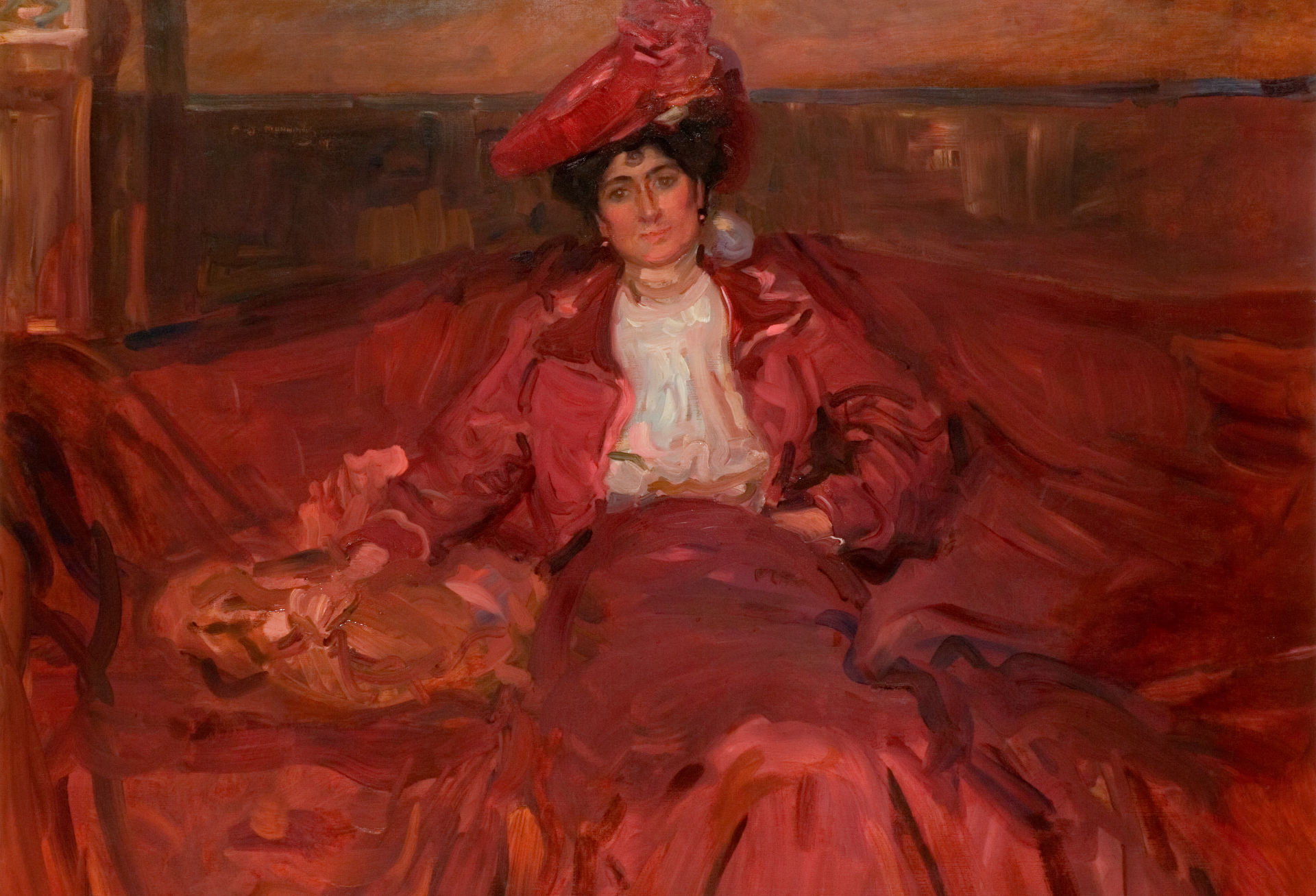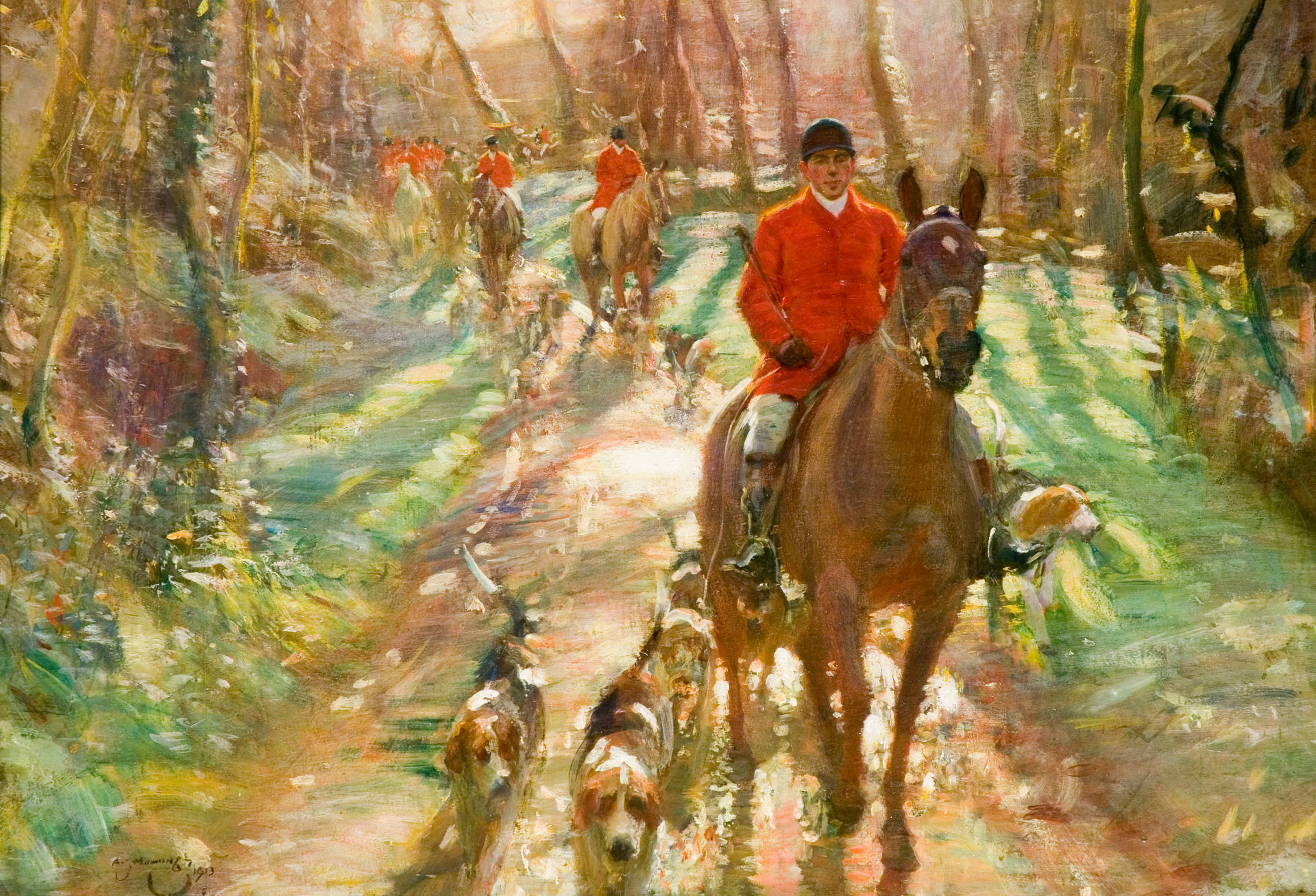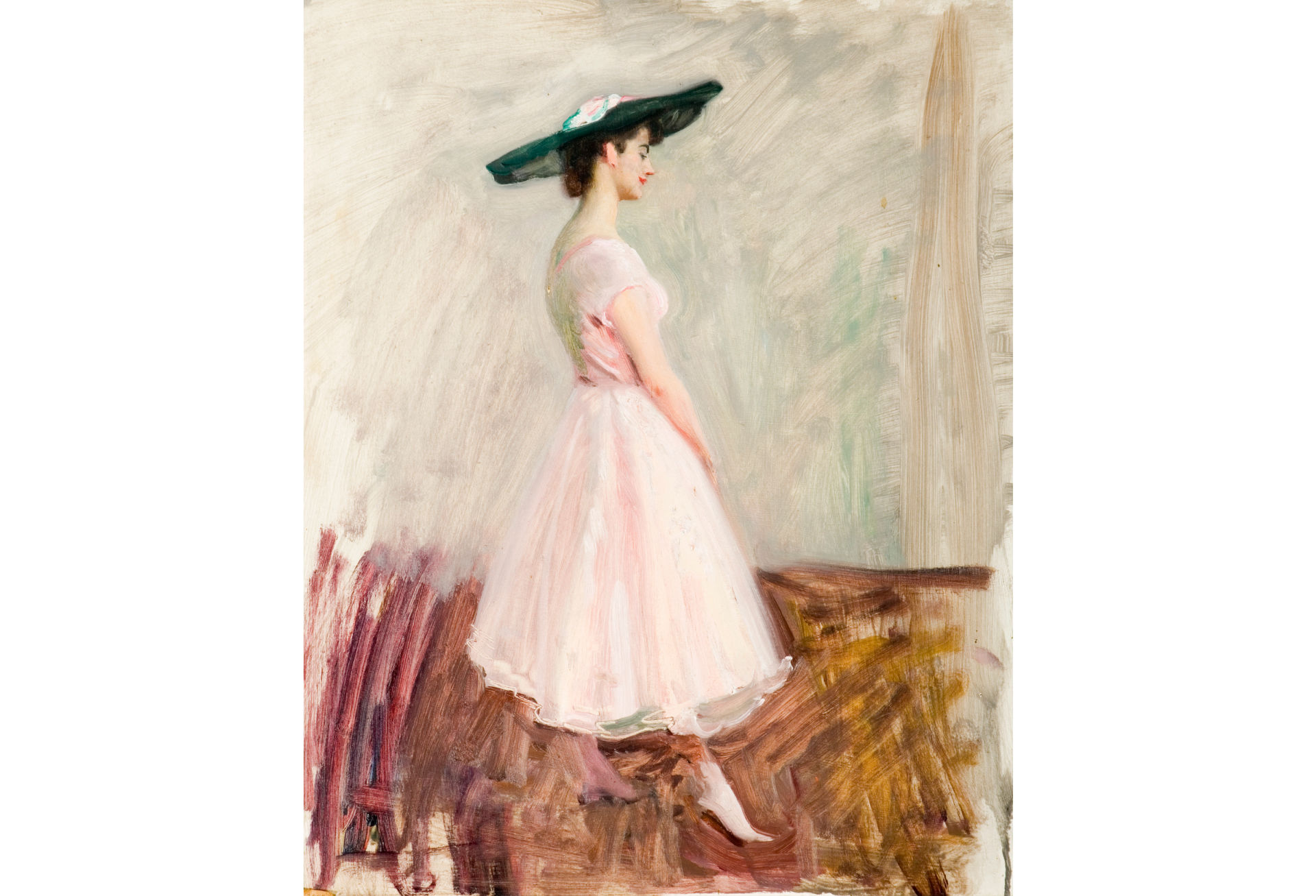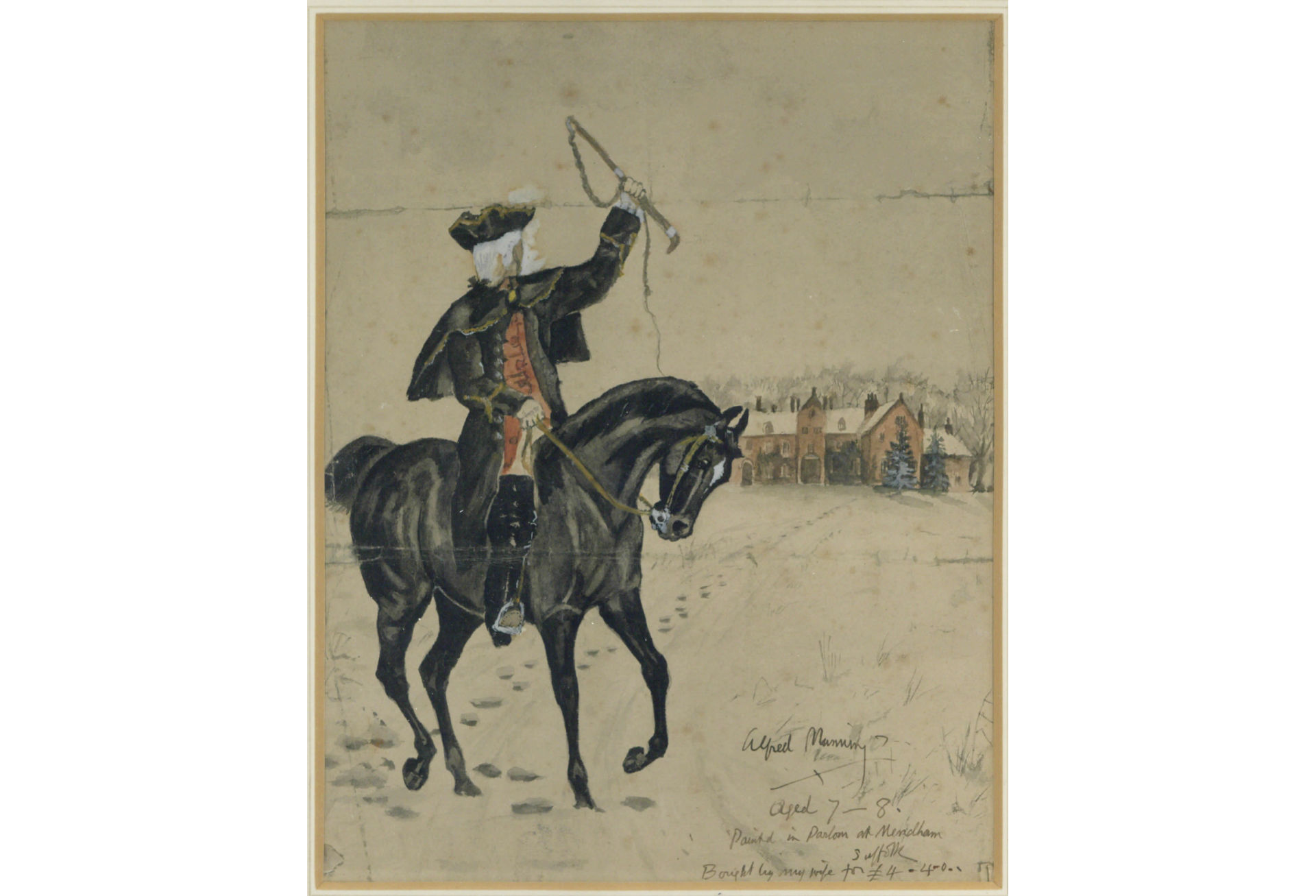At first glance, the substantial yellow house on the turn of the country road could be a Trollopean rectory, one long sold off to a lawyer or boardroom executive. This is Castle House in north Essex – set in the flat, luscious landscape made famous by John Constable – which was for 40 years the home of the artist Sir Alfred Munnings. Since his death in 1959, it has been a museum dedicated to his life and work.
There is an overwhelming sense of tranquillity, a peculiar bucolic permanence, like the memory of a hot sunny day from childhood
Munnings, you may recall, painted horses – that’s what the Oxford Dictionary of Art and Artists will tell you, at least – but he did so much more than this, as the contents of this magnificent house reveal. Describing Munnings as a horse painter is rather like describing Michelangelo as an interior decorator.
Quite apart from being president of the Royal Academy (from 1944 to 1949), and being an implacable foe of modern art, Munnings was a painter of luminous portraits, landscapes of rare brilliance, as well as studies of pigs, ponies and more, all painted en plein air.
Castle House contains the sort of musty interiors in which Agatha Christie would have happily placed a good murder. Still hung up in the hall are his wife’s equestrian rosettes; nearby is her stuffed Pekingese dog, Black Knight.
The house has some 200 of his oil paintings on display, out of 658 owned by the museum, making this the world’s largest collection of the artist’s work. The pieces have all been rehung – now showing his work from seven decades – but the walls are still painted grey (in accordance with Munnings’s preference). As well as the paintings, the museum has 60 sketchbooks and 7,000 other items, such as letters and photographs.
Visitors first meet the Munningses in ‘My Wife, My Horse and Myself’, a painting first exhibited in 1935, that combines an equestrian portrait of his second wife Violet (shown seated on what is believed to be Anarchist, the painter’s favourite horse). Violet and the horse appear in front of the house with the artist there, too, palette in hand. In composition, draughtsmanship, and painterly verve and wit, this is a clear introduction to the man.
Hung in the exhibition space is the ‘Portrait of Nelly Grey’ (1909) – a woman in red on a red background offering shades of Degas’s ‘Coming the Hair’ in the National Gallery. Behind her the light dazzles from the back of the grey pony in ‘Ponies in a Sandpit, Ringland Hills, Norfolk’ (1909), while its flanks and belly are tinged green, reflected from the landscape. In ‘Pigs in the Woods, Lamorna’ (1912), a cool streak of whitish-grey on the spine of the great sow leads the eye to the horizon, lost in a brilliant recess of woodland. In both of these, the light of Edwardian England is reflected back at us.
There’s a spirit of calm in these pictures – one present in two of the artist’s most highly regarded works, ‘Path to the Orchard’ (1908) and ‘Charlotte’s Pony’ (1905). Both show female figures leading horses. There is an overwhelming sense of tranquillity, a peculiar bucolic permanence, like the memory of a hot sunny day from childhood.
Then in another corner, there is something very different – two figures, one of which is Munnings’s first wife, the artist Florence Carter-Wood who committed suicide four days before the start of the Great War – along with a Scottie dog, its tongue a dab of red among its black fur.
After his upbringing in Norfolk and Cornwall, Munnings went to war – in a manner of speaking. Having been blinded in one eye in an accident when he was 21, he was barred from military service but in 1918 Max Beaverbrook commissioned him to go to France to be a war artist where he recorded the activities of the Canadian cavalry. The 44 paintings Munnings produced turned him into a star, propelling him from the ranks of provincial painters to one of national and international prominence. He also earned enough money to buy Castle House for £1,800, which he did in 1919.
Among the war works – sadly not at the museum – is an equestrian portrait of General Seely, painted quickly on a frosty January morning. Munnings had to stand on a wooden board while painting the portrait to prevent himself from sinking into the mud. It was this painting that made him. But this commercial success narrowed him to the position of equine painter, albeit one of unique standing.
There is much more to Munnings than horses – as his landscapes of the Stour Valley, Exmoor, Norfolk or the Pyrenees show. And there is as much life to his human subjects as his equine ones too. You can’t look upon the conviviality of the subjects in ‘Tagg’s Island’ and not know you are the presence of an artist of immense distinction.
Like a novelist who wants to be remembered for his poetry, Munnings wanted to be remembered for his landscapes. Of the 300 paintings on show at his 1956 Royal Academy retrospective, 60 were landscapes lent by Munnings himself.
At Castle House, there is evidence of an artist who can probably claim to be one of the greatest British painters of the 20th century, certainly of the first half. The only sadness is that most of us have forgotten about him, but that is easily rectified.
Munnings: Colour and Light is on at the Munnings Art Museum until 23 October. www.munningsmuseum.org.uk













Comments
Comments will appear under your real name unless you enter a display name in your account area. Further information can be found in our terms of use.